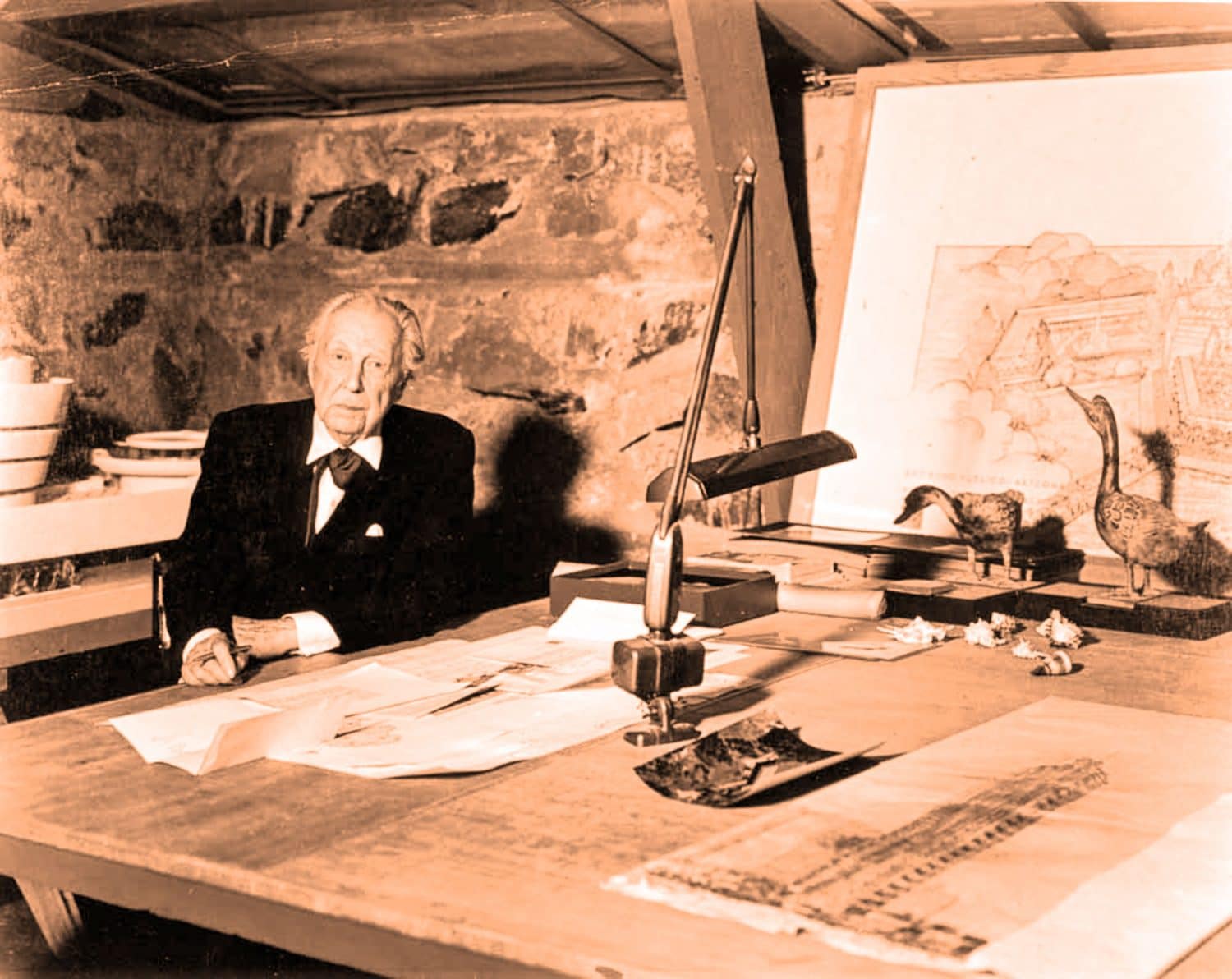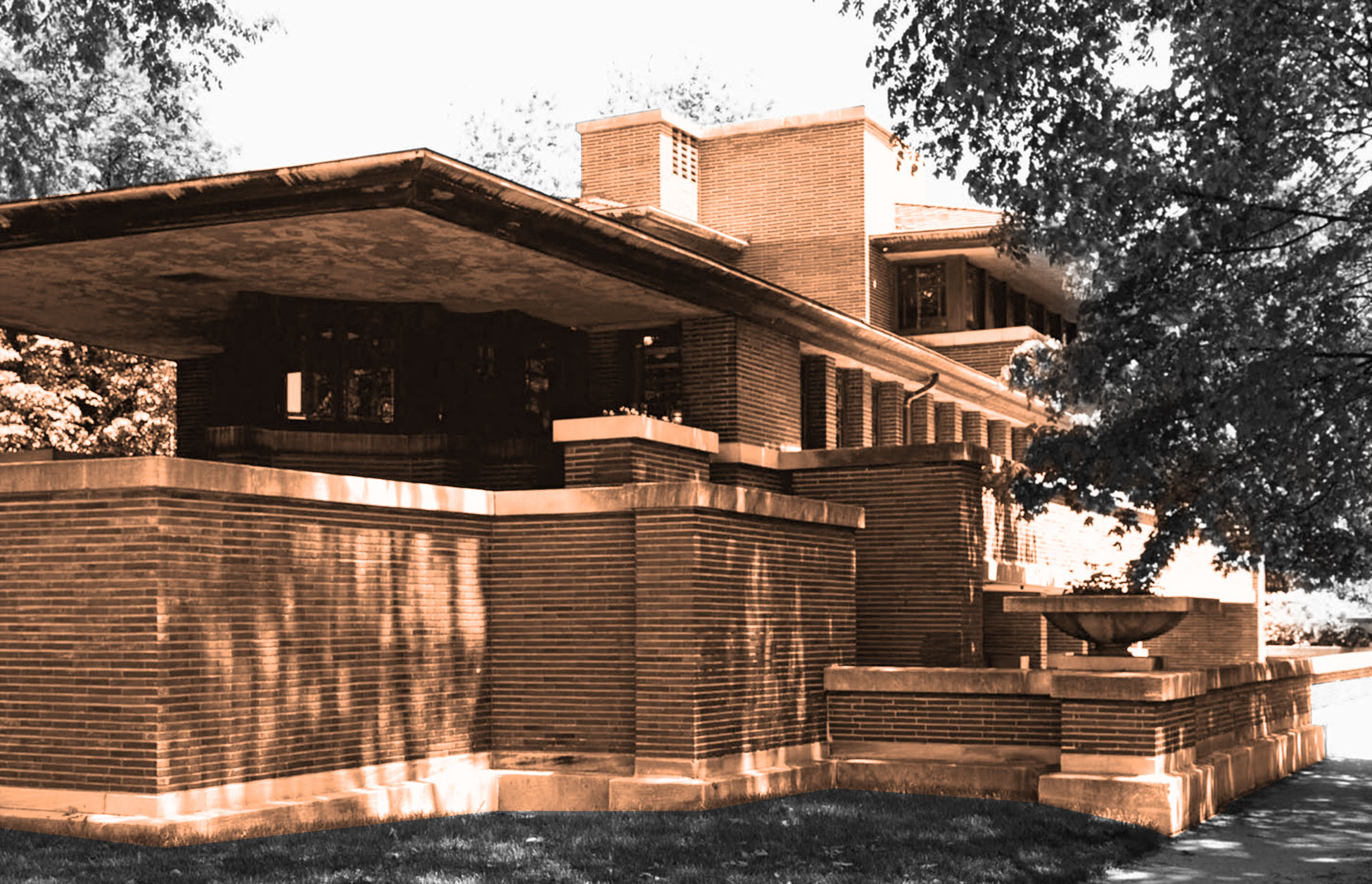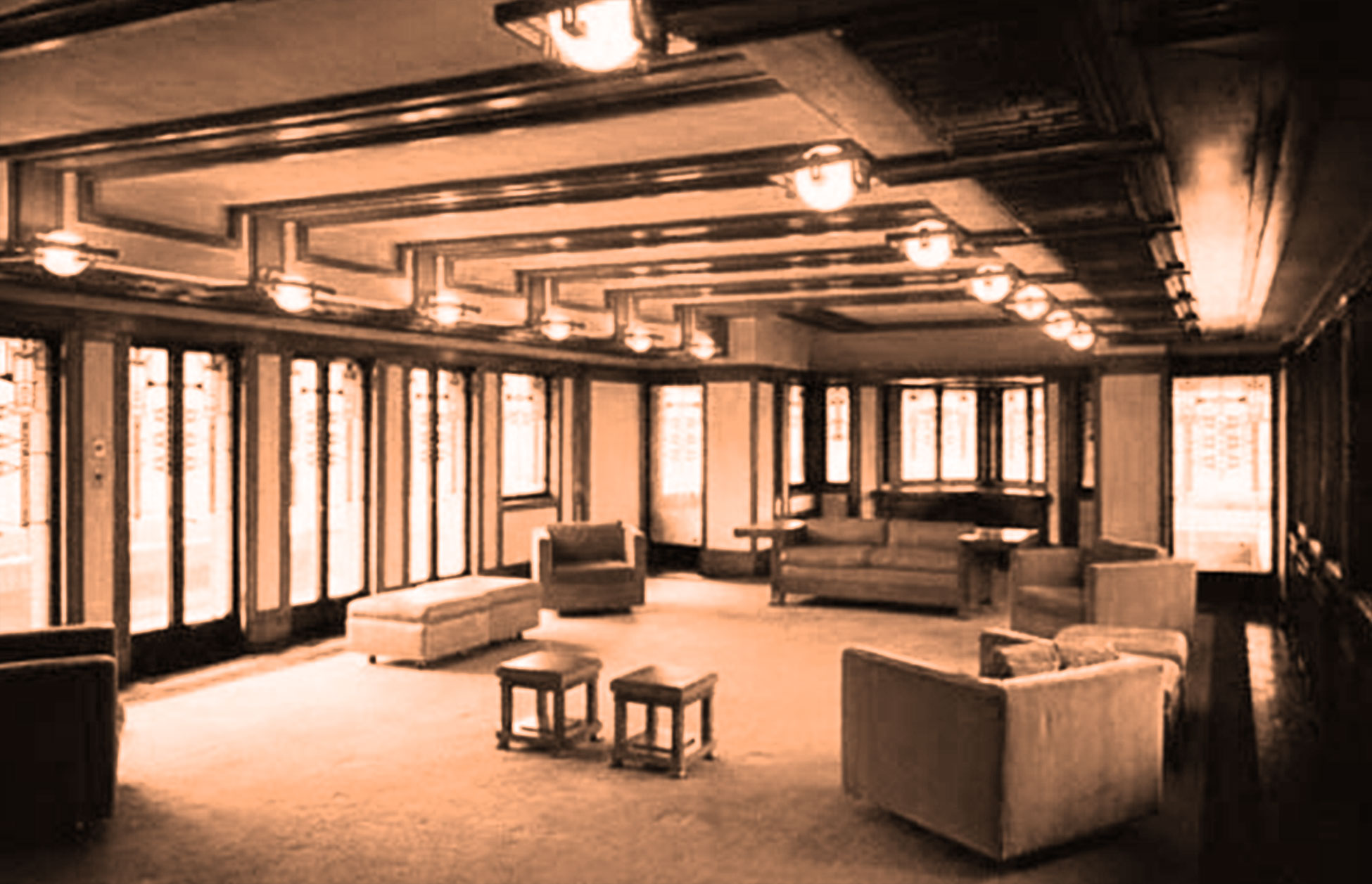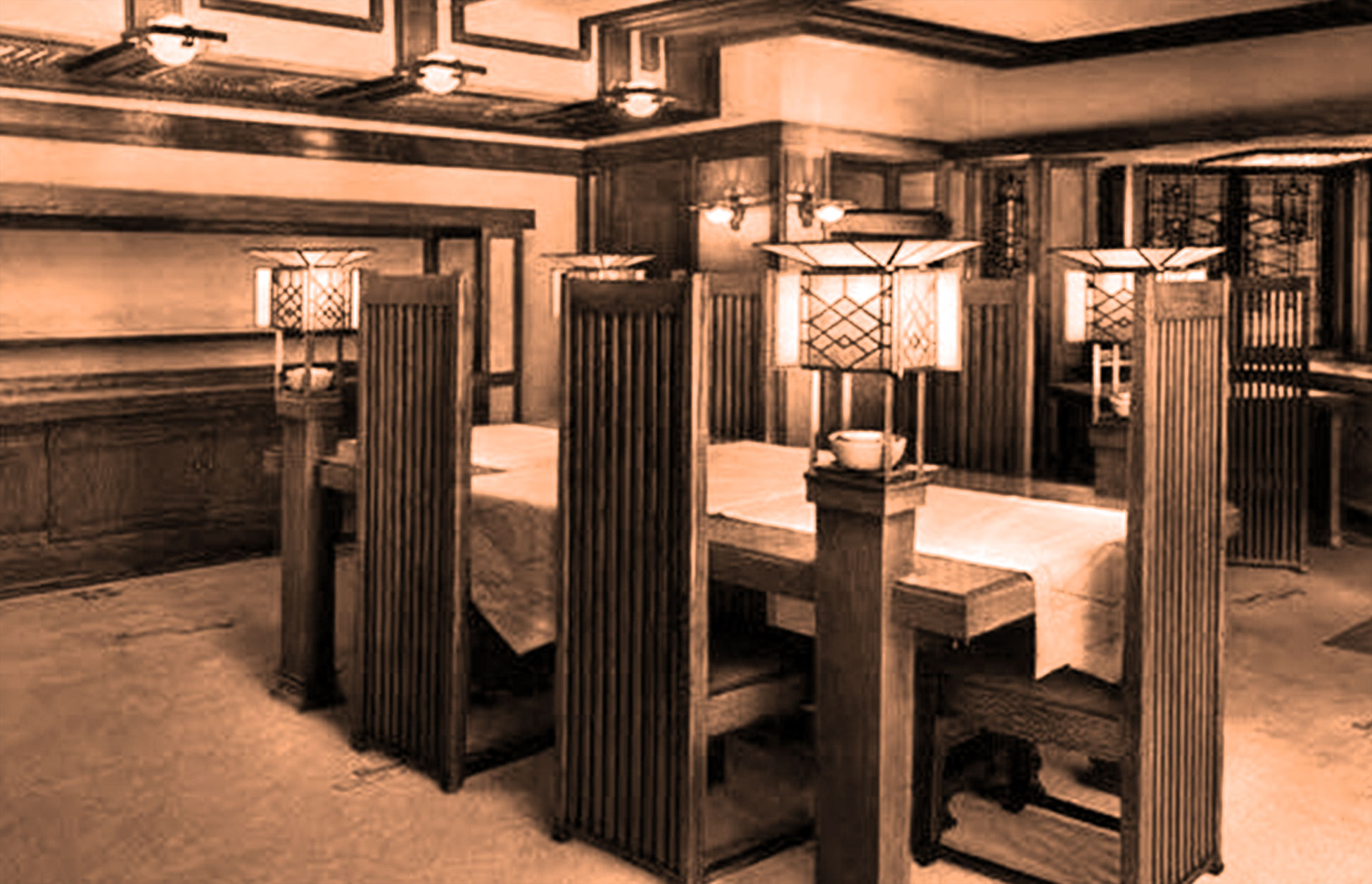INTERIOR
Frank Lloyd Wright & the Prairie Houses

Frank Lloyd Wright became a reference in architecture since the publication in Germany in 1910 of the Wasmuth Portfolio, a compilation of his works from the first decade of the 20th Century. A significant part of this work was a series of single-family houses built on the edges of Chicago that got known as the Prairie Houses. In these houses Wright intended to design a single ambience by reducing the partitions, so the interior space was a continuum instead of a succession of pieces. From that very moment on internal space, instead of façades, became the material which architects would work with.
Architecture becomes something integral, expression of a new permanent reality that lies in the habitable internal space of the room.Frank Lloyd Wright, An autobiography, 1932
In these houses the influence of the Arts & Crafts movement, claiming for the union of the applied arts under the direction of architecture, was still very important. So architecture, furniture and applied decoration worked together in the resulting buildings. The main difference between Wright’s furniture and Arts & Crafts furniture lay in its architectural vocation and its use as space organiser.
Wright used different strategies to involve the furniture in the whole architectural design. When it was possible, he turned the pieces of furniture into fixed elements, embedded in the walls or working themselves as partition walls. In the case of furniture that occupied a central position in the room, such as the dining tables and chairs of the Prairie Houses, their shape and firmness conferred them a seeming immobility and the capacity of defining their own space inside the room.







